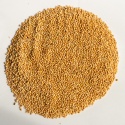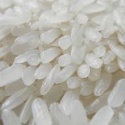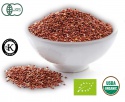In the past two months, the grain markets were growing up in response to the expiration of the December contracts and the weakening of the US dollar, as well as on the output of the first USDA report on upcoming crops of US farmers in the 2017-2018 season. Farmers have reported a sharp reduction in winter wheat plantings to 32.4 million acres (-10.4% for the season 2016-2017), as well as on the planned common wheat crops in the area of 45.68 million acres versus 50.2 million acres planted in the 2016-2017 season. Crops of corn in the season 2017-2018 in the United States are estimated at 90.49 million acres, which is 3.7% lower than in the 2016-2017 season. The report provoked a sharp rise in grain prices, but as time passed USDA reported that in collecting data, there are significant gaps that may mean insufficient full coverage of farmers and at the beginning of the season 2017-2018 causing a material adjustment of the crops data upwards.
In addition, support for the wheat market has provided an additional cereal import demand from India, where due to a sharp fall in domestic stock prices increased by 40%. The country announced its intention to buy 6 million tons of wheat in the 2017-2018 the season and has already purchased 2.7 million tons of wheat in Australia, Ukraine and Russia. The government abolished the import duty on wheat.
Meanwhile, the harvesting campaign the 2016-2017 season in the Northern Hemisphere was completed with record results. According to the International Grains Council, the total output of grain in the 2016-2017 season in the world amounted to 2.094 billion tons, 4% higher than the previous season. World cereal stocks at the end of the season 2016-2017 will grow by 6.7% in the previous season - to 507 million tons.
World production of corn in the 2016-2017 season will be 1.045 billion tons, wheat - 752 million tons. Production growth was observed in China, Australia, Canada, the EU, Argentina, and Russia.
The sown area of wheat in the world, in the 2017-2018 season will remain unchanged, because the drop in acreage in the United States and Kazakhstan will be compensated by increasing crop areas in Russia and North Africa. The conditions for growth of winter crops in the northern hemisphere remain favorable.
Exports of grain of the season 2016-2017 in the world are moving actively. The main suppliers of grain in the world market are the US, Russia, the EU, Argentina, and Brazil.









